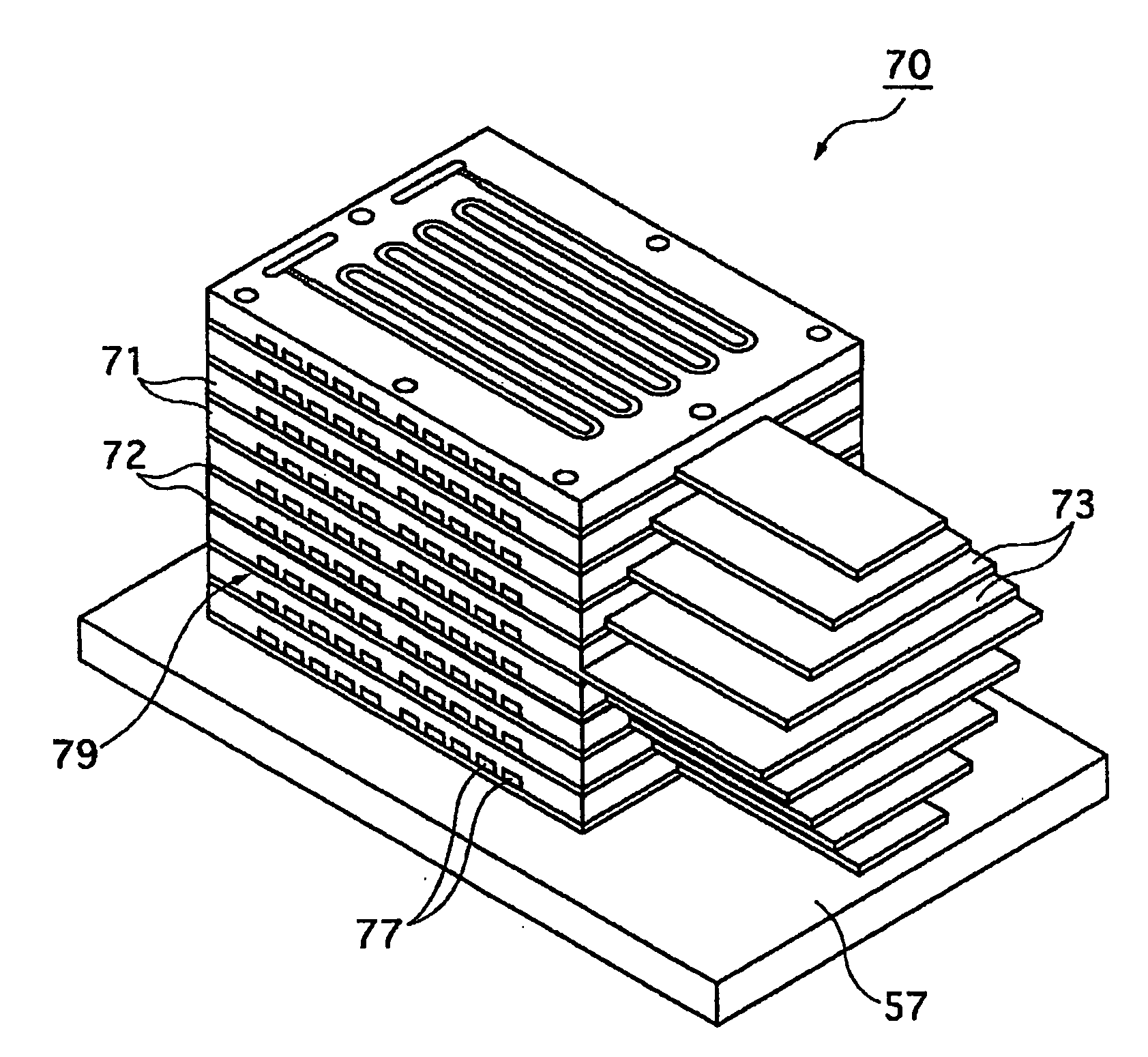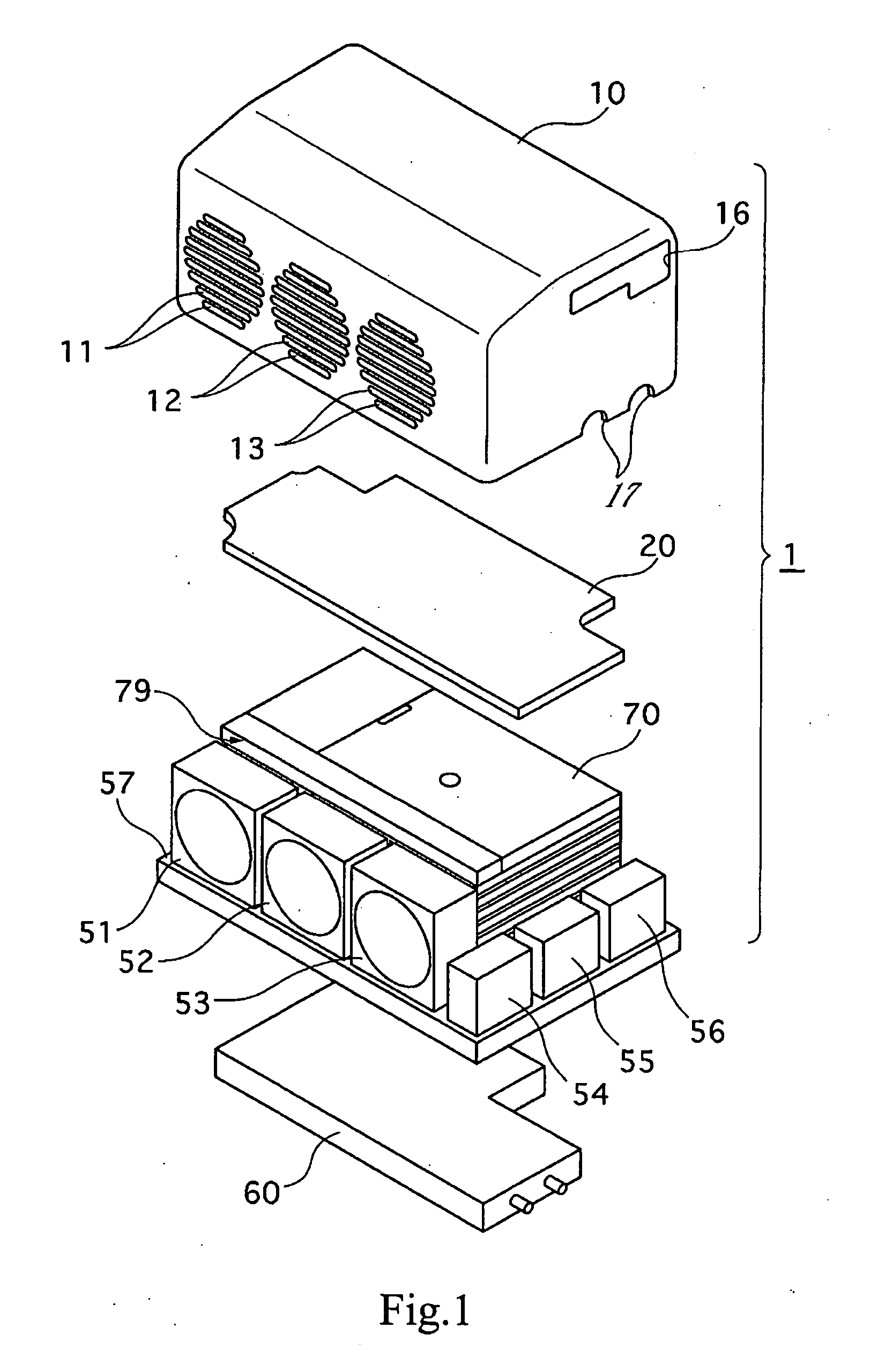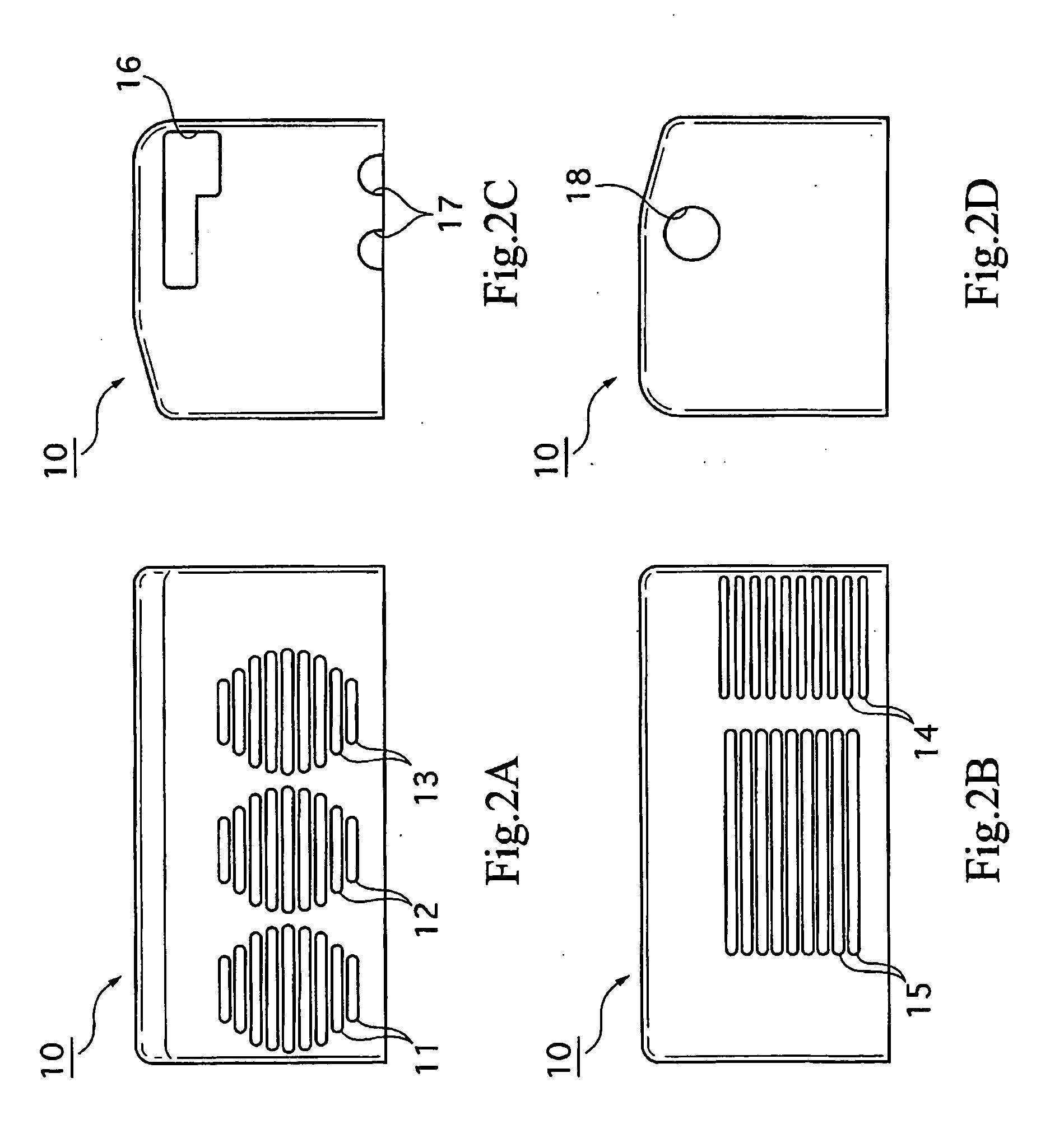Separator, fuel cell device, and temperature control method for fuel cell device
- Summary
- Abstract
- Description
- Claims
- Application Information
AI Technical Summary
Benefits of technology
Problems solved by technology
Method used
Image
Examples
Embodiment Construction
[0069] Now, the separator and the fuel cell device according to the present invention will be described below. The separator according to the present inventor has a characteristic feature in a thermal radiation portion, and, further, the fuel cell device including the separator according to the present invention, i.e., the fuel cell device with a power generation unit mounted therein is a fuel cell device capable of performing power generation while keeping uniform the temperature of the power generation unit by utilizing the characteristic feature of the thermal radiation portion.
[0070] First, the configurations of the separator and the fuel cell device according to the present invention will be described referring to FIGS. 1 to 7. As shown in FIG. 1, the fuel cell device 1 includes a casing 10, a control substrate 20, a power generation unit 70, a cooling fan 51, air supply fans 52 and 53, a hydrogen purge valve 54, a regulator 55, and a manual valve 56. In addition, the fuel cel...
PUM
 Login to View More
Login to View More Abstract
Description
Claims
Application Information
 Login to View More
Login to View More - R&D
- Intellectual Property
- Life Sciences
- Materials
- Tech Scout
- Unparalleled Data Quality
- Higher Quality Content
- 60% Fewer Hallucinations
Browse by: Latest US Patents, China's latest patents, Technical Efficacy Thesaurus, Application Domain, Technology Topic, Popular Technical Reports.
© 2025 PatSnap. All rights reserved.Legal|Privacy policy|Modern Slavery Act Transparency Statement|Sitemap|About US| Contact US: help@patsnap.com



